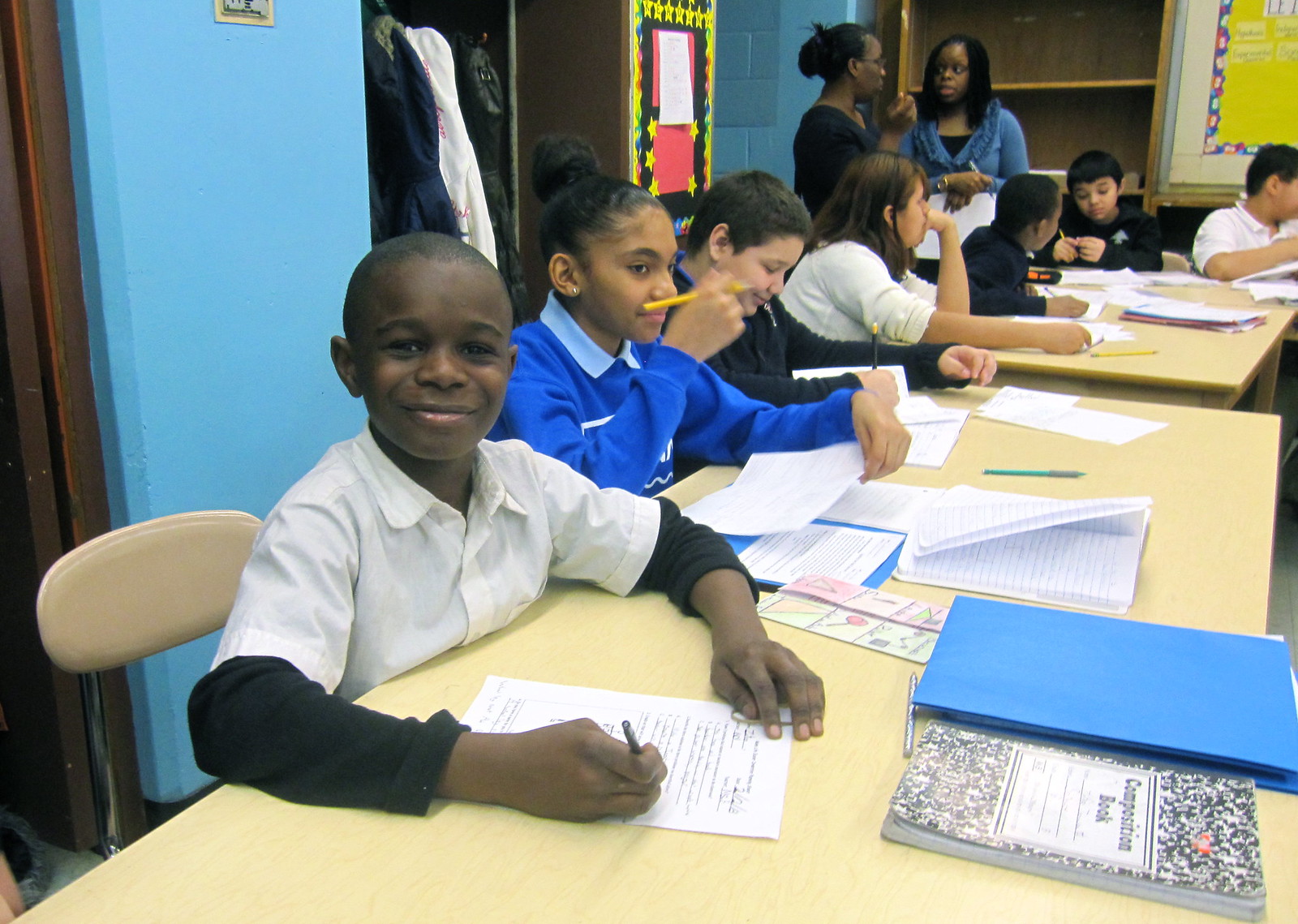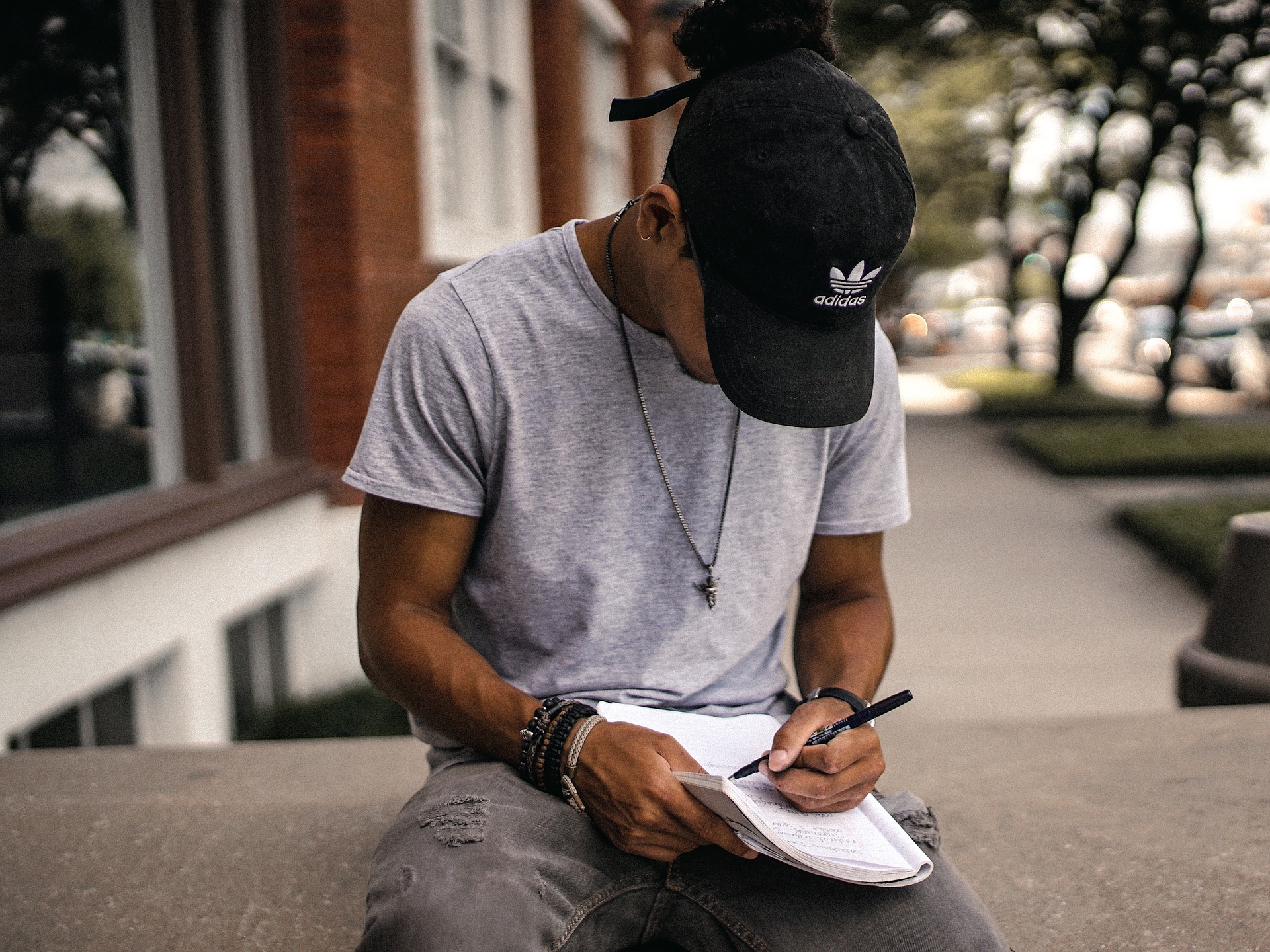At Bronx Park Middle School (BPMS) in the East Bronx, students are encouraged to communicate and be creative. Aided by teaching artists and using exploratory and alternative styles of thinking and lesson plans to support writing with imagery and vision, students are pushed toward developing writing skills. This emphasis directly follows Bronx Park’s educational philosophy: “All students will work to improve their academic flow by showing growth in reading comprehension and the ability to demonstrate knowledge through writing across our interdisciplinary curricula, through the implementation of best practices in literacy instruction.”
The importance of both reading and writing are stressed. With the help of a teaching artist from Teachers & Writers Collaborative, different methods of attacking critical thinking used to comprehend literature are explored in classes and during professional development workshops for teachers.
Twice a week, poet Erika Luckert comes into the classrooms of BPMS to carry out T&W’s mission: “inspire the imagination and foster self-expression, communication, and lifelong love of literature.” Luckert, a second-year T&W teaching artist, works directly with students and also develops and shares exercises for the teachers to implement in their classrooms.
One of seven teachers Erika is working with at Bronx Park, Stephanie Sonneborn stresses the importance of writing in her classroom, starting her writing days off for her sixth-grade class with fifteen to twenty minutes of writing accompanied by Spotify’s Lofi Hip-Hop Beats playlist. From there, students swap papers, give feedback, and have the opportunity to share with the class. While this may seem like a lot for students to manage on a daily basis, the routine keeps them engaged with the writing process. Sonneborn’s students are eager to hear what the rest of the class has to share and are interested in offering reactions to what their peers have written. As Sonneborn said in an email interview, “The kids love sharing their writing with everyone. If someone’s writing is really interesting, kids will even say things like ‘wow that’s so sad’,” or ask the writer what is going to happen next.
Luckert employs different teaching techniques from that of Sonneborn, focusing on collaborative writing. In teaching Sonneborrn’s students and other classes at BPMS, Luckert emphasizes creativity and collaboration that give students new opportunities to explore their ideas. In working with teachers, Luckert stresses the importance of letting the imagination run wild through exercises aimed at helping students to accentuate setting, point of view, and dialogue, among other literary elements.
By allowing her students to come up with their own scenarios, Luckert establishes “a culture of collaboration in writing, talking to each other.” Learning to work collaboratively is an important aspect of growth for students.
Sonneborn cites a character development exercise that worked particularly well with her students. Luckert created a series of questions for students to use in interviewing one another as though they were characters from their stories. Questioners starts easily by asking their partner their name. From there, the interview process becomes more intense as students ask about their classmate’s character’s biggest fear and why it scares them. This process allows students to become familiar with the characters they are creating and the direction in which they want their stories to go. Luckert encourages students to use the Q&A as dialogue within their own work.
So often, lack of knowledge of a character’s direction can hold writers back. Luckert’s lesson forces students to delve deeper and gather as much information on their characters as possible. It enables them to think about the motives of their own creation in a fun and communicative way.
In fact, Sonneborn said she liked the lesson plan so much she has developed it into another assignment and will use it again next year, citing the positive experience she had this time around. Her students “loved collaborating with each other and several of the kids said it helped them have a better understanding of their character and where they wanted the story to go.”
Another lesson plan Luckert has used was to ask students to create a map for their own stories. They draw the map in the hopes of learning something about the story, encouraging new ideas and perspective to add to the story. As models, Luckert used a map from Tolkien’s Lord of the Rings and another one from the Fortnite video game, which she says the “real challenge is calming class down after they saw the… map.”
Luckert’s strategies, she says, are geared toward helping students for the future. Creativity doesn’t stop; she sees her practices useful even in college. These learned ideas can be applied further along in life—encouraging students to think about different perspectives by looking at things from the view of the characters in their stories will benefit them in the long haul.
Sonneborn and Luckert learn from one another, using different teaching styles. Luckert allows students to be more vocal, with Sonneborn trying to implement more of this in the future. On the flip side, Sonneborn says that Luckert “will pick up on some of the teaching strategies I use. For example, in our most recent lesson, after watching me record student thinking on the board during a whole class discussion, she used this strategy in the next few classes.” By using a collaborative teaching model, each of them can play to their strengths in the classroom.
The classroom partners want their students to grow and learn to think outside the box. Even during the dreaded testing season, students are in good spirits, as Sonneborn and Luckert’s exercises focused less on testing materials and scores and more on the imagination.
Photo Credit: Inside Schools
Ethan Victor is a second-year MFA creative writing in fiction student at The New School. He received his undergraduate degree from the University of California, Davis in English with a double emphasis and literary theory, with a minor in professional writing. Ethan was born and raised in Los Angeles and loves to write about the city he grew up in because it is “way more chill” than New York. He is an editorial associate at Teachers & Writers Collaborative.



